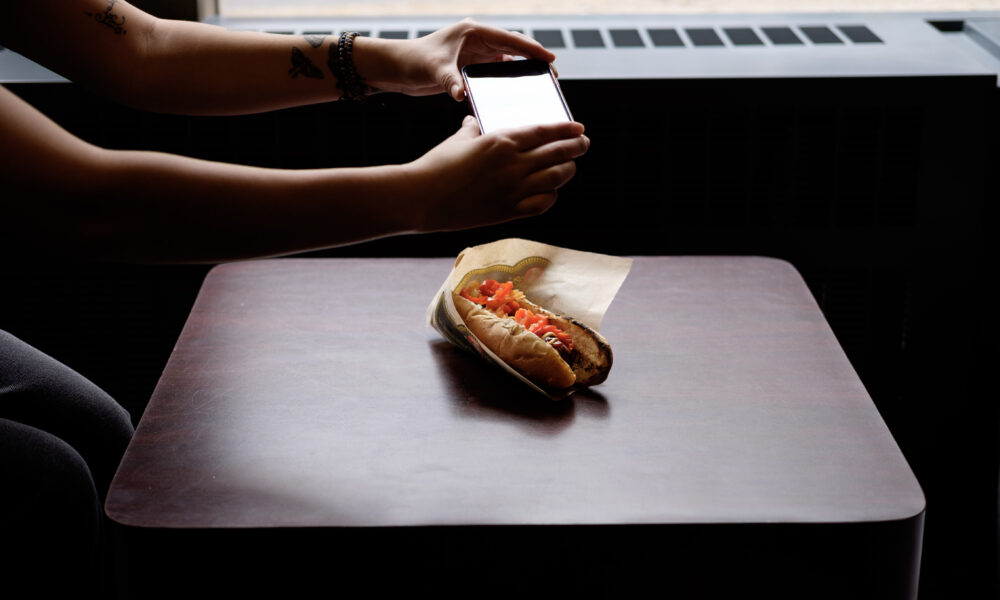Rapid technological advancements have transformed numerous industries, including the field of food quality assessment. Augmented Reality (AR)—a technology that allows digital images and information to be projected onto the real-world environment—has emerged as a powerful tool to enhance food inspections and evaluations.
In a recent paper, Jacob Liberty, PhD student in McGill’s Department of Bioresource Engineering, and his team explored AR technology and its applications in food quality and safety assessment.
Food quality assessments serve to systematically evaluate potential hazards associated with food products. These assessments aim to identify and analyze health risks posed by factors such as harmful bacteria, chemical contaminants, or other substances.
In the traditional food quality assessment process, sensory panelists or consumers perform a sensory evaluation of food products.
“This evaluation focuses on various sensory attributes such as appearance, aroma, taste, texture, and overall palatability,” Liberty wrote in an email to The Tribune. “Sensory evaluation provides valuable insights into the [sensory] properties of food products, helping to assess their quality, acceptability, and consumer preferences.”
Although well-established, the traditional food quality assessment process is vulnerable to errors due to the inherent subjectivity of sensory evaluations.
However, AR technology provides an innovative and alternative approach to the sensory evaluation process, improving its efficiency, accuracy, and objectivity.
“AR-enhanced sensory evaluation provides standardized assessments based on objective attributes such as colour, texture, and flavour, thereby enhancing the accuracy and reliability of food quality assessments,” Liberty wrote.
Another concern with traditional methods is the lack of transparency around information about food products, including their ingredients, sourcing, production process, and sustainability.
The majority of consumers called for more transparency in the food industry and expressed concerns about food safety and quality.
“[These] concerns have increased due to incidents of foodborne illnesses, contamination, and fraud, [so] consumers want assurance that the food products they purchase are safe, authentic, and of high quality,” Liberty wrote.
In addition to food safety concerns, the growing interest in sustainability and ethical sourcing practices has led to a higher demand for traceability in the food supply chain. This increased attention drives consumers to seek information about the environmental and social impact of their food choices.
AR technology offers innovative solutions to enhance transparency by providing consumers with instantaneous information about the food they consume, including its source, production methods, and quality attributes.
“By providing consumers with access to transparent and traceable information through AR technology, food producers and suppliers can build trust, foster brand loyalty, and meet the evolving expectations of the modern consumer,” Liberty wrote.
Furthermore, the traditional food quality assessment process lacks real-time precision—the immediate and accurate identification of food safety and quality issues, which can lead to delays in addressing these problems.
By contrast, AR allows real-time precision through the use of AR-enabled smart glasses. Equipped with built-in cameras and sensors, these glasses can provide inspectors with hands-free access to critical information and tools during food quality inspections. For example, they can overlay digital information, such as product specifications and inspection checklists, onto the inspector’s field of view in real-time.
“This allows inspectors to quickly identify defects, contamination, and quality issues while maintaining efficiency and accuracy,” Liberty wrote.
Despite the benefits of AR technology, its implementation in food quality assessment requires careful consideration of various ethical and regulatory factors to ensure responsible and compliant use.
“AR technology relies on accurate and reliable data inputs to generate meaningful insights. [Therefore,] food producers and suppliers need to ensure the accuracy and integrity of the data sources used in AR applications to prevent misleading or erroneous outcomes that could compromise consumer safety and trust,” Liberty wrote.
Liberty also points to the importance of ensuring consumer education, regulatory compliance, bias mitigation, and privacy protection during the implementation of AR technology.
By addressing these considerations, the stakeholders can harness the transformative potential of AR technology in food quality assessment while ensuring ethical standards and regulatory compliance.









